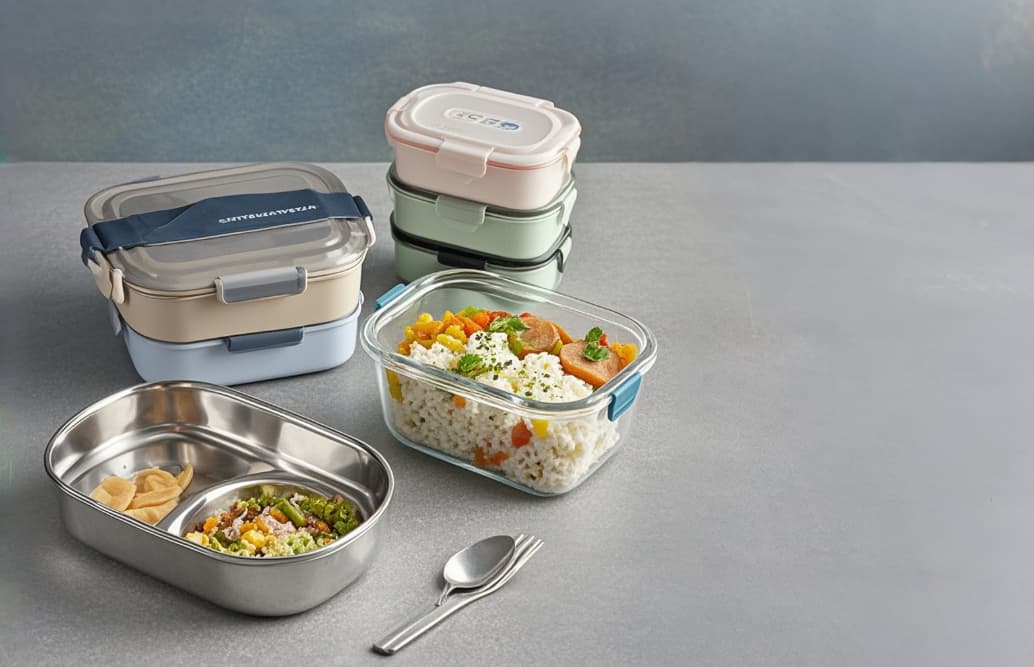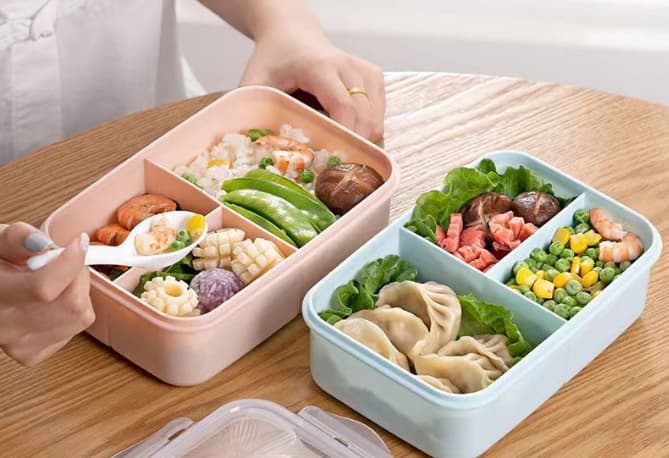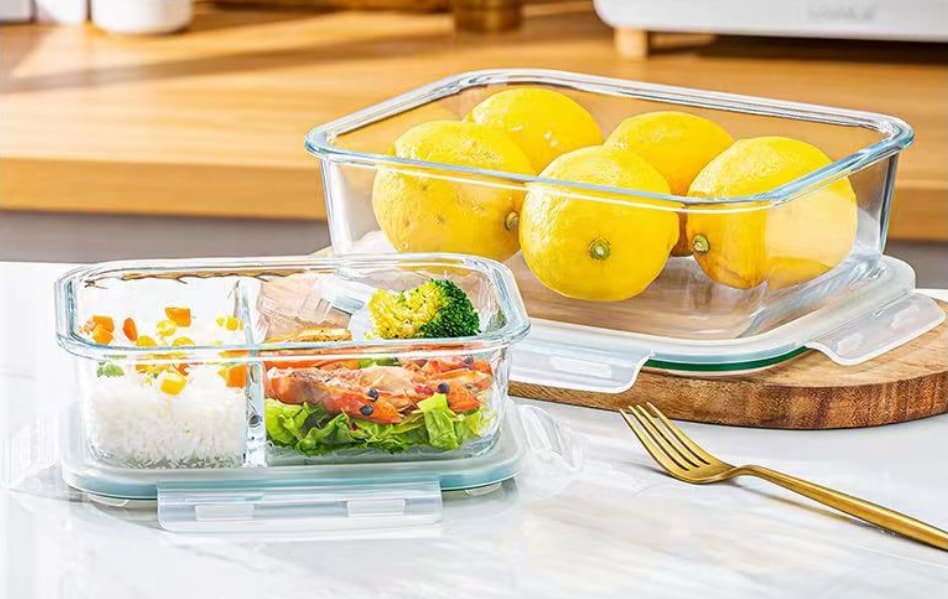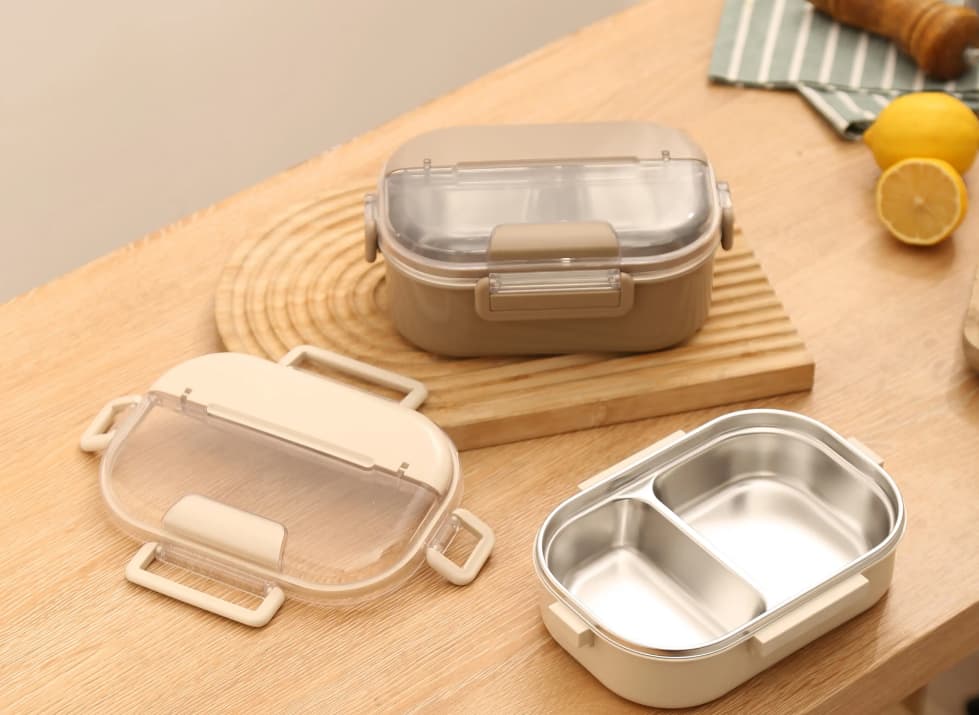
Among many materials, stainless steel, glass and ceramic are considered to be healthier choices. These materials have excellent antibacterial properties, which can effectively inhibit the growth of bacteria and reduce the risk of food contamination. As for the use of plastic lunch boxes, people generally have concerns, mainly focusing on the harmful chemicals they may release. Many plastics contain substances such as bisphenol A (BPA), and some plastics contain substances such as bisphenol A (BPA), which can have a bad effect on human health. What Is The Healthiest Material For Lunch Boxes? It is particularly important to understand the advantages and disadvantages of different materials. As a professional wholesale lunch box supplier, I will introduce you to the advantages and disadvantages of lunch boxes made of different materials.

Choosing Safe Lunch Box Materials: What You Need to Know
When choosing safe lunch box materials, we need to consider several key factors: material safety, durability, ease of cleaning, and impact on the environment.
Plastic Lunch Box
The most common and widely used material for lunch boxes is plastic, however, there are safety concerns about its use. Many plastics are known to have compounds like bisphenol A and phthalates that are harmful when in direct contact with food and may leach into it. It is true that in the many available plastic products in the market seeking to impress consumers proclaim “bpa free” labeling, some studies have revealed that other substitute chemicals may be just as bad. Thus, if you purchase a plastic lunch box, make sure it is indeed a food-safe material, and do not keep hot food in it for too long.

Glass Lunch Box
Glass lunch boxes are becoming more and more popular because they are non-toxic, heat-resistant, and not easy to absorb odors. Compared with plastic, glass is a traditional and reliable container material that does not release any toxins, so it is considered one of the safest choices.
In addition, glass lunch boxes are easy to clean and not easy to discolor. They are suitable for storing a variety of foods and are very safe. Some foods may cause chemical reactions when stored in plastic lunch boxes. Especially acidic foods such as ketchup or lemon juice.
However, the weight and fragility of glass may affect its portability. Heavy glass lunch boxes are a big challenge for traveling or camping, and you need to be extra careful when carrying and using them.
When heating, glass may experience uneven thermal expansion, causing stress concentration, which in turn causes cracks. Therefore, when using glass lunch boxes to heat food, be sure to choose products marked as microwave-safe and follow the heating guidelines to prevent excessive temperature changes. When choosing glass lunch boxes, tempered glass and borosilicate glass are two highly recommended materials because they are more able to withstand high temperatures and rapid temperature changes, ensuring safety and convenience.

Stainless Steel Lunch Box
There are many benefits of using stainless steel lunch boxes which is the reason why they are commonly utilized. One, unlike the other materials used to manufacture lunch boxes, stainless steel is long lasting, cannot be broken easily, is resistant to impact, and is therefore appropriate for everyday usage. Additionally, it does not corrode and does not interact with food, thus promoting food hygiene. In addition, stainless steel lunch boxes are usually designed to be sealed, which can effectively prevent leakage and are suitable for storing soups or wet foods.
Also, cleaning stainless steel lunch boxes is quite easy as they are mostly dishwasher-friendly and do not absorb any odors and colors. The heat retention capability is also very impressive, able to maintain food temperature even conducive for keeping hot meals. Last but not the least, stainless steel alloy is a very ecological material since it can be recycled, which aids in minimizing the usage of plastic and fits well with the principles of sustainable development. All these qualities justify the increasing popularity of stainless steel lunch boxes in terms of both health and ecological issues.

Lunch Box Materials Compared: Which Is the Healthiest?
To help you choose better, here is a comparison of different lunch box materials:
| Material | Safety | Durability | Cleaning Convenience | Eco-Friendliness |
| Plastic | May contain harmful substances | Lightweight, fragile | Easy to clean | Not eco-friendly |
| Glass | High | Heavy, fragile | Easy to clean | Recyclable |
| Stainless Steel | High | Very durable | Easy to clean | Recyclable |
| Bamboo | High | Not water-resistant, prone to damage | Easy to clean | High |
| Silicone | High | Heat-resistant, flexible | Easy to clean | Recyclable |
What to Avoid: Harmful Chemicals in Common Lunch Box Materials
When it comes to selecting bento boxes, one of the most important aspects is to be aware of the toxicity of some common materials and what they might contain. Below are some materials that should be avoided and the danger they present:
Plastics:polycarbonates, a type of plastic, contains BPA (Bisphenol A) while phthalates a chemical used in many residential plastics may leach out at elevated temperatures and may pose health threats such as endocrine disrupting issues among others. Hence, alternatives like BPA free plastic or other options should be considered.
Coatings: Some metal lunch boxes may have an unsafe coating that can break down and leach toxic substances when exposed to hot temperatures or acidic foods. Only use coating materials that are tested to avoid such risk.
Low grade glass: While it is true that the majority of glass ware is good and safe for contents, there are some cheap, low quality glassware that contains lead or other dangerous metals especially when manufactured in a wrong way. Avoid such situations by being specific and strict on the both the brand and the certifications upon purchase.
Low grade silicone: Some inexpensive silicone wares may contain harmful fillers or chemicals effects of which could compromise the safety of the food products. Use of food-grade silicone that is of higher standard will help to minimize this risk greatly.
As far as the lunch boxes are concerned, the consumers ought to choose food grade materials that are certified and not include any of those products that have such excessive toxic chemical practices, for health and safety purposes.
How to Choose the Right Lunch Box for Kids
There are a few important considerations when purchasing a lunch box for kids. To begin with, the safety of the material used is a must. It must be non-toxic food contact material such as stainless steel, glass or high-grade plastic, which do not leak any toxic elements.
Secondly, children lunch boxes design should be practical, a child easy opening lid and a handle suitable for children’s small hands.
In addition, in order to help children eat properly, a lunchbox with sections can be useful for keeping various foods separately. Last but not least, ease of cleaning factors also come in play. Low weight and wash friendly lunch box are good because it enhances the lunch experience of a child. .After going through these factors in totality, it becomes possible to purchase practical and effective lunch box for your little one.